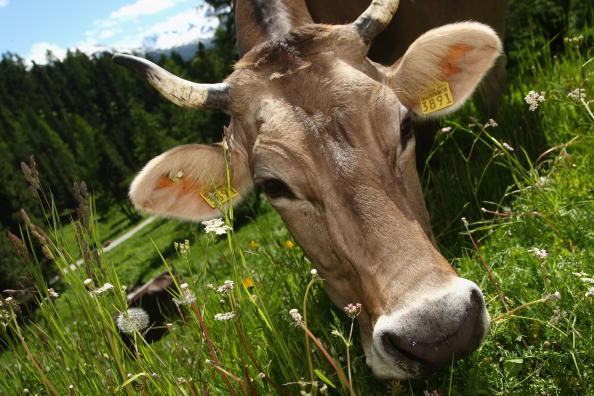The Independent's journalism is supported by our readers. When you purchase through links on our site, we may earn commission.
Cows could be largest mammals on earth if extinction continues at this pace
Human influence on the survival of big mammals is 'striking,' one scientist says

Your support helps us to tell the story
From reproductive rights to climate change to Big Tech, The Independent is on the ground when the story is developing. Whether it's investigating the financials of Elon Musk's pro-Trump PAC or producing our latest documentary, 'The A Word', which shines a light on the American women fighting for reproductive rights, we know how important it is to parse out the facts from the messaging.
At such a critical moment in US history, we need reporters on the ground. Your donation allows us to keep sending journalists to speak to both sides of the story.
The Independent is trusted by Americans across the entire political spectrum. And unlike many other quality news outlets, we choose not to lock Americans out of our reporting and analysis with paywalls. We believe quality journalism should be available to everyone, paid for by those who can afford it.
Your support makes all the difference.If extinction continues at its current pace, scientists are warning that cows could become the largest mammals left on earth.
The 2,000-pound peaceful farm animals may end up the largest land dwellers left in "a few hundred" years thanks to a combination of hunting, poaching and carnivorous diets, according to a study published in the journal Science.
"The only time being big is bad is when humans are involved. We are efficient predators and have been for a really long time — so there's not a value judgment here — it's just what hominids did," professor of biology at the University of New Mexico and lead author of the study Felisa Smith told Mashable.
"Species that went extinct tended to be two to three times bigger than mammals that survived, a trend that was evident globally," the study noted, indicating that size and extinction rates were linked. Most mammals today are degrees smaller than mammals from thousands or millions of years ago.
"There is a very clear pattern of size-biased extinction that follows the migration of hominims out of Africa,” the study’s lead author, Ms Smith said
If the trend continues “the largest mammal on Earth in a few hundred years may well be a domestic cow at about 900kg”, the researchers wrote.
Ms Smith said that the notion that climate change may have caused the disappearance of creatures like the woolly mammoth, elephant-sized sloths, saber-toothed cats, and rhino is inaccurate. While shifting climates, like the dawn of the ice age, caused adaptations in animals it was not the primary cause of their extinction.
She explained that in the past when an animal’s habitat was no longer suitable due to climate, it could simply move. But, humans eventually started getting in the way as people settled and developed.
Her team of researchers looked into every continent in one million year intervals, over the last 65 million years of fossil data. Ms Smith said the impact of humans moving around and out of the African continent around 125,000 years ago was “striking”.
If the trend continues, “the average weight of mammals would also plummet to less than six pounds — roughly the size of a Yorkshire terrier,” USA Today reported.
The study also found that 125,000 years ago, mammals were already 50 per cent smaller there than mammals on other continents, where humans had not made their way as yet. "We suspect this means that archaic humans and other hominins had already influenced mammal diversity and body size," co-author Kate Lyons of the University of Nebraska-Lincoln told USA Today.
In North America, for instance, the mean body mass of land-based mammals has shrunk to 7.6kg (17lb) from 98kg after humans arrived.
The reduction of large mammals in what the study referred to as the “New World” was linked to the beginning of the use of long-range weapons by humans. Larger mammals meant a more sustainable food source for people.
Join our commenting forum
Join thought-provoking conversations, follow other Independent readers and see their replies
Comments